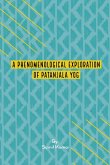Overweight and obesity are defined as an excessive fat accumulation in the body that may impair health and increase the risk of morbidity from several pathologies, including hypertension, dyslipidemia, type 2 diabetes, coronary heart disease, stroke, non-alcoholic fatty liver disease, osteoarthritis, sleep apnea, and cancers of the endometrium, breast, prostate, and colon. Being overweight and obesity are becoming major health problems worldwide including in developing countries. It is of multifactorial origin and the most important cause is an improper lifestyle and stress leading to hyperlipidemia, lipid peroxidation, and increased generation of reactive oxygen species thereby generating oxidative stress. Regular practice of yoga has shown beneficial effects on lipid profile and oxidative stress status in type 2 diabetes mellitus and other ailments. Hence, the present study was undertaken to find out the effect of the yogic intervention on lipid profile, oxidative stress, and physiological parameters in overweight and obese adults. After taking institutional ethical committee clearance, a total of two hundred subjects (group average age, 27.9 ± 2.6 years) were included in the present study by applying the revised body mass index (BMI) classification which defines overweight as BMI between 23-24.9 kg/m2 and obesity as BMI¿25 kg/m2. Based on the BMI the recruited subjects were divided into overweight (n=76) and obese (n=124) groups. Clinical history and anthropometric data were collected from all the subjects.








